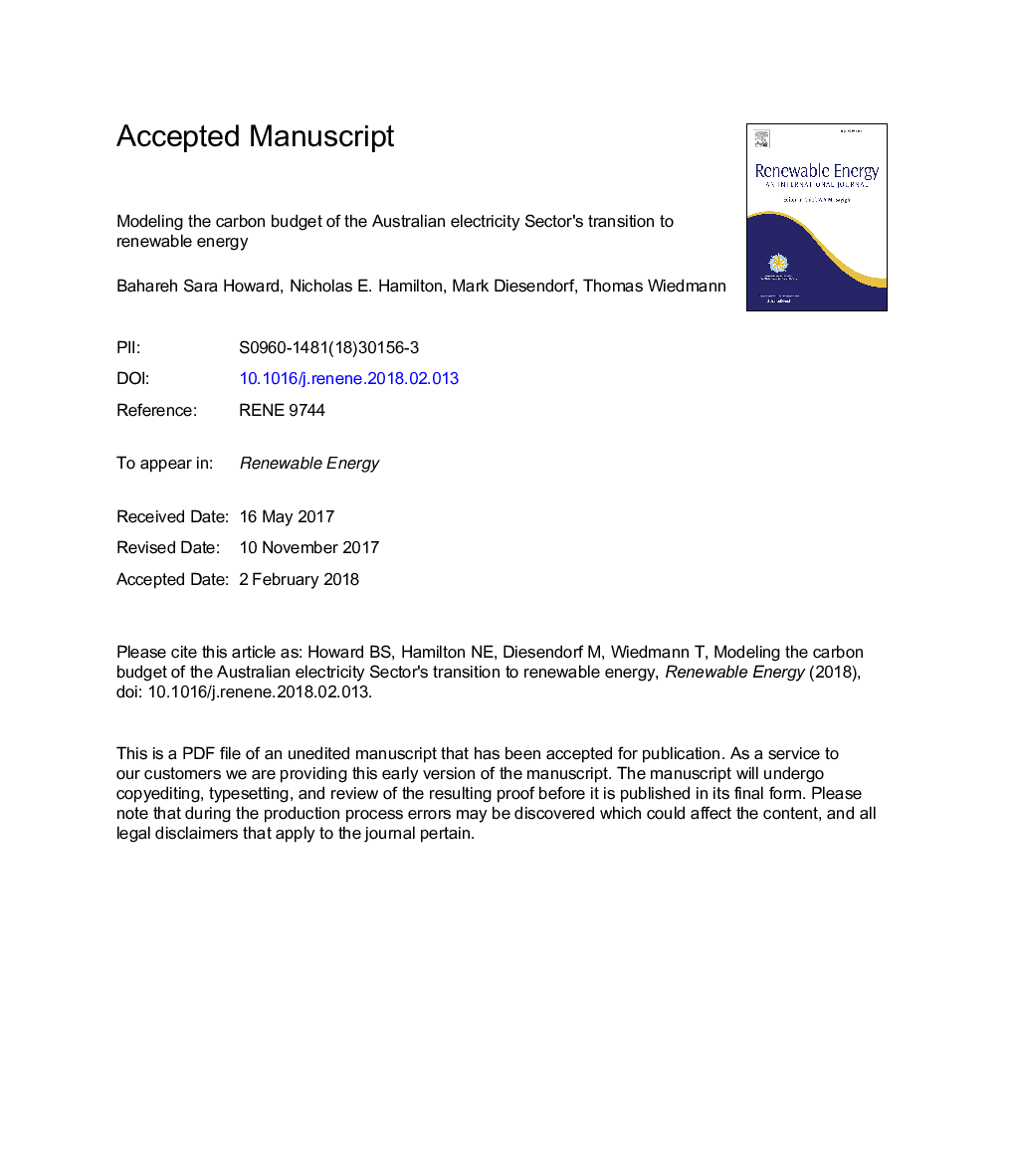| Article ID | Journal | Published Year | Pages | File Type |
|---|---|---|---|---|
| 6764425 | Renewable Energy | 2018 | 43 Pages |
Abstract
We report on the carbon footprint of 22 scenario pathways for the transition of the Australian electricity sector to predominantly renewable energy (RE). The analysis employs a dynamic and discrete numerical model that takes into account what we have termed renewable energy 'breeding', i.e. RE technologies are being made increasingly with renewable electricity as the transition progresses. Our results show that every scenario under investigation fails to achieve the sector's share of Australia's national carbon budget for a 1.5â¯Â°C global warming limit and around one-third fail the 2â¯Â°C target by 2050. In most of the scenarios considered, the reduction in annual life-cycle CO2e emissions in the year 2050, from taking into account the effect of RE breeding, was substantial, in some cases reducing annual emissions by more than 90%. But, the reduction in cumulative CO2e emissions resulting from RE breeding only became significant post-2040. Unless a very rapid transition is made to more than 80% renewable electricity in Australia well before mid-century, any positive 'breeding' effect is simply dwarfed by fossil-fuel derived emissions prior to and during the actual transition. Therefore, early, decisive, wide-scale deployment of a suitable mix of RE technologies is needed to reduce cumulative emissions.
Related Topics
Physical Sciences and Engineering
Energy
Renewable Energy, Sustainability and the Environment
Authors
Bahareh Sara Howard, Nicholas E. Hamilton, Mark Diesendorf, Thomas Wiedmann,
